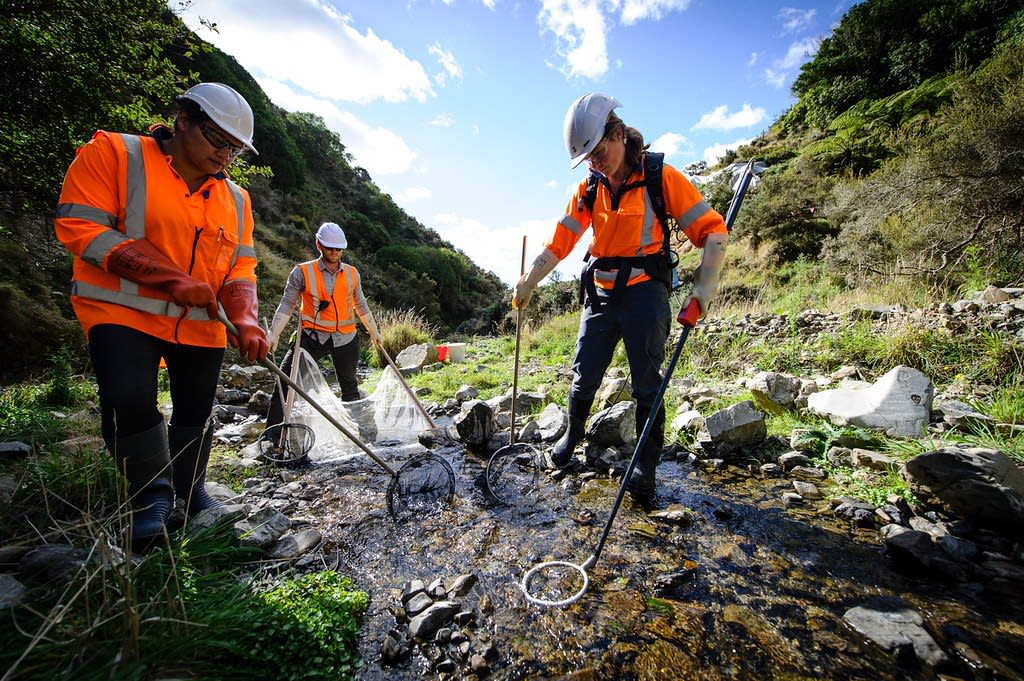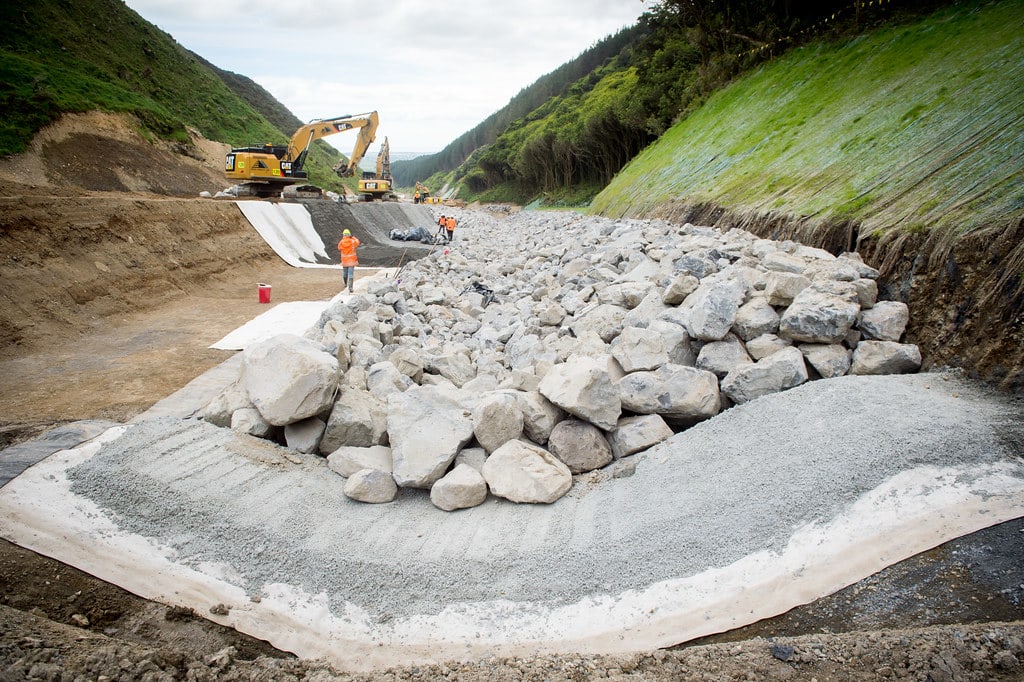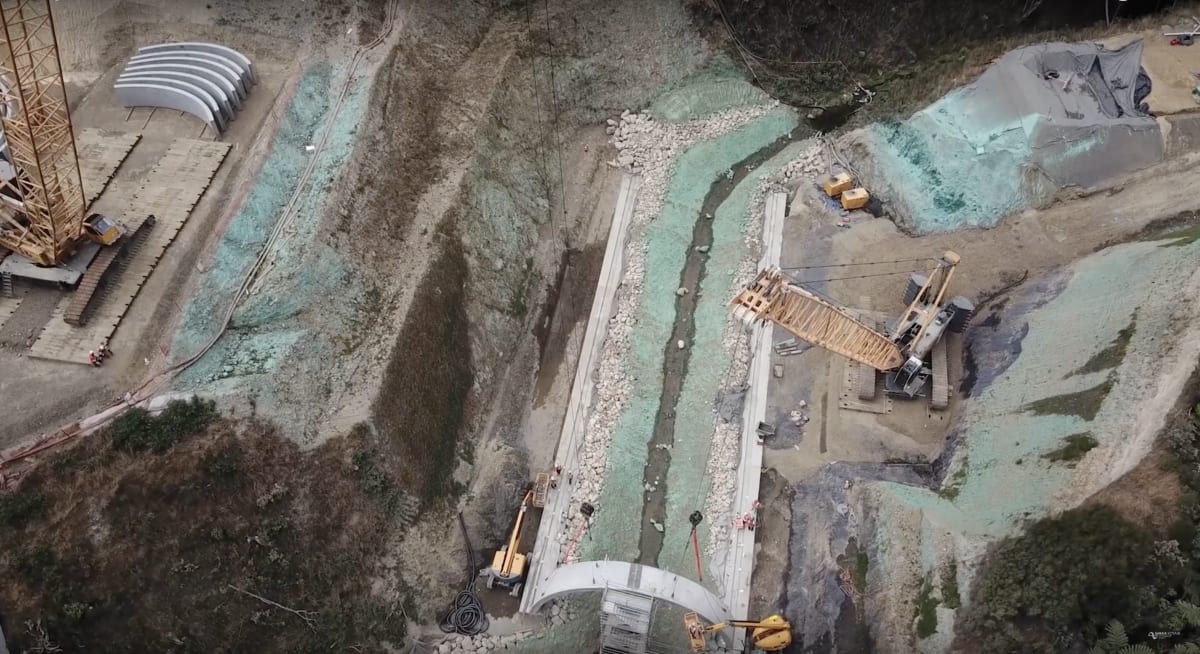
An environmental criminologist tapes off Transmission Gully as a crime scene. David Williams reports
The assurance was made in early 2009.
Environment Minister Nick Smith got to his feet in Parliament, moving the first reading of a bill his Government said it would introduce within 100 days of taking office. (It did so under urgency.)
The bill was designed to fix the Resource Management Act. Smith said decision-making needed to be quicker, more certain, and the process cheaper.
An Environment Protection Authority was to be established, and part of its job would be to oversee boards of inquiry created to push through major infrastructure projects – like big highways. It was part of a central government package to stimulate the economy.
Smith had an important bottom line, though: “I reassure New Zealanders that this re-balance will not mean a reduction in environmental protection.”
Events dominoed.
The Government announced the 27km-long, four-lane Transmission Gully highway, between Wellington and the Kāpiti Coast, would be built. (Its opening last month was ushered in with a slightly bewildering media blitz.)
Waka Kotahi (NZ Transport Agency), Porirua City Council and Transpower lodged consent applications with the Environmental Protection Authority in 2011. A Board of Inquiry was established and in June 2012 the decision to approve the consents, with conditions, was released.
Two consent conditions were important for indigenous fish migration and protection near Paekākāriki. One was that a steel ‘I’ girder bridge be built over Te Puka Stream, the other was the replacement of a “perched culvert” over Wainui Stream.
Freshwater ecologist Mike Joy, contracted by the Kāpiti Coast District Council at the Board of Inquiry hearings, thought the conditions were good.
“Given that the proposed stream realignment was so extreme there wasn’t much chance for the aquatic life in the upper stream, but at least the passage to the Wainui catchment would be improved and the current culvert migration barrier would be removed so something positive would come from it.”
However, Joy, who lives at Paekākāriki, was shocked to discover, years later, the conditions had been altered, without a formal process, and without consulting him. “I was angry, not just for the stream itself but also the incredible waste of money and time.”
Were promises of environmental protection broken?
Sarah Monod de Froideville, a lecturer at Victoria University of Wellington’s Institute of Criminology, investigated. Her conclusions are detailed in the paper, No Bridge Over Troubled Water, written with Charles Louisson, and supported by the Environmental Law Initiative.
The pair said manipulative tactics were employed to justify the consent condition changes, and the “inappropriate” funding model for Transmission Gully led to a climate of shortcuts and tradeoffs. (The initial budget of $850 million for the public-private partnership blew out to $1.25 billion.)
The paper raises questions about whether the soon-to-be-replaced Resource Management Act, and if the public bodies charged with carrying out consent checks and balances are doing their jobs.
In Transmission Gully’s case, a local group, Friends of the Paekākāriki Streams, did much of the digging into opaque decisions.
“It’s almost like the public and the environment are up against it,” Monod de Froideville says. “If it comes down to community groups like Friends of the Paekākāriki Streams, who have to badger the councils and NZTA for information about their responsibilities under the law ... then we’ve got no hope, because who the hell has time to do that?”
The paper suggests embedding eco-centric principles into environmental laws, and the creation of an independent guardian body, similar to Te Pou Tupua, which protects the Whanganui River, to ensure environmental protections.
Joy says: “This debacle has highlighted major failings in the legislation and reveals again the capture of environmental regulators in New Zealand.”
Greater Wellington Regional Council didn’t directly respond to allegations it undermined the Board of Inquiry decision. The council said it is Waka Kotahi’s responsibility, as consent holder, to ensure compliance with conditions.
Waka Kotahi senior manager of infrastructure delivery Andy Thackwray says accusations it used manipulative strategies to get a consent condition change “is completely untrue”.
Newsroom asked Environment Minister David Parker if he was concerned environmental protections under the Board of Inquiry process were so easily changed but he declined to comment. He also didn’t comment when asked what assurances he could give the public these failings would not be repeated when the replacement bills for the RMA are drafted.

Te Puka Stream is an upper branch of Wainui Stream. The branches join and flow through Queen Elizabeth Park to the Paekākāriki coast.
The catchment is home to indigenous fish species – some threatened or at-risk – like banded kokopu, and red-finned bullies. Some of those species, like long-finned eels, are migratory, swimming to waters near Tonga to lay their eggs, and then die.
Problems occur when the young return from the sea – they face barriers like culverts and pipes.
Freshwater ecologist Joy says sediment builds up behind the culvert in Wainui Stream meaning that in low flows the water goes through the gravels.
Replacing the perched culvert – one in which water drops over a lip – was a condition, agreed with other experts, to improve fish passage. The ‘I’ girder bridge was an attempt to simulate a natural stream, allowing fish to find cover from predators, as Te Puka was moved and rebuilt.
Official information requests were used to discover the change documents.
It turns out, once the Board of Inquiry decision is made its work is done.
Environmental Protection Authority general manager of climate, land and oceans, Michelle Ward, says Greater Wellington Regional Council is responsible for administering the consents for Transmission Gully, and monitoring and enforcing compliance with conditions.
(Another Board of Inquiry approved changes to the regional council’s freshwater plan in 2011, which the Victoria University paper says set the precedent for decisions “to be as favourable to development as was possible”.)
However, the board also stated: “The [regional council] is required to consider the effectiveness of the methods proposed but it is not the role of the authority to reinvent or second guess objectives and benchmarks set out in consent conditions.”
While management plans to deal with uncertainty were “adaptive”, the consent conditions were “red lights”, Monod de Froideville wrote.
An added complication to an already complex and large project was the Government’s instruction, in 2012, for NZTA to use a public-private partnership (PPP) model to keep Transmission Gully’s costs down.
A review of the project, released in February last year, said using a consented scheme design to procure a PPP project led to “inevitable cost changes”. Using a PPP model doesn’t guarantee cost certainty, the review said.
The scheme’s “affordability threshold” was also “set too low”. Many of the 355 designation and consent conditions were revisited.
National list MP Gerry Brownlee, who was Transport Minister from December 2011 to October 2014, said contractor bids were commercial decisions made after extensive consideration. “No one put pressure on them to drop their price.”
He didn’t know if overturning the Board of Inquiry consent conditions was legal.
Overall, he said Transmission Gully was a very good project. “The benefit to local communities will be enormous.”

Waka Kotahi applied to the Greater Wellington Regional Council to change consent conditions in October 2013. Approval took less than a month.
The proposal to achieve fish passage in Wainui stream was to install fish ladders. The condition now noted the need to replace “or modify” the culvert, subject to approval, and possibly new consents.
Because the council assessed adverse effects would be no more than minor, the changes “administrative”, public notification wasn’t thought to be warranted.
This was a critical error, Monod de Froideville wrote. “The proposed changes are, instead, material and substantive changes to the conditions that were to operate as the outcome measures.”
Greater Wellington also overlooked the obvious – that replacing the culvert was considered by the Board of Inquiry (BOI) “part of a mitigation plan for the devastation … on the Te Puka stream”.
The proposed changes were shared with iwi groups and territorial authorities, but not with the Department of Conservation and other submitters who raised concerns about fish passage.
It’s disputed that indigenous fish like eels, short-jaw kokopu, koaro and torrent fish could even use fish ramps in the Wainui Stream. As the Friends of Paekākāriki Streams pointed out, the culvert often runs dry as the stream disappears into built-up gravel.
“Thus the need for bridges, not culverts,” freshwater ecologist Joy says. “All this had been part of my original evidence and why the decision for bridges was accepted by the BOI and why it should not be altered, in secret after the fact.”
(Installing fish ladders is like building a 10m-high wall on Lambton Quay, Joy says, and putting step ladders on either side. Not only is it a chokepoint during a fishy rush hour, it’s also an obvious place for predators to pick off migrating fish.)
Changes to the Te Puka Stream bridge, to an arched design, were covered in a December 2016 memo from consultants Boffa Miskell, acting for the joint-venture group, and a subsequent “in general accordance” assessment by the regional council, made six months later. (Boffa Miskell didn’t respond to a request for comment.)
Discussion in the memos centred on new seismic requirements, and how the change would lead to a shorter construction time, and a reduced construction footprint. Fish passage – “the primary driver for the original bridge design” – is mentioned by the regional council’s assessment just once.
The new bridge design was considered “within scope”, and not a significant change in intensity or character, when compared with the whole Transmission Gully project, and its effect on the Wainui catchment.
“I just couldn’t believe it when I read that,” Monod de Froideville says.
Her paper notes: “It is akin to permitting any change at all so long as its impacts are less than the scale of impacts from a multi-year construction of a national highway, through complex terrain.”
The regional council received legal advice it should be more tolerant and flexible in its assessments, as the Board of Inquiry anticipated changes, and approved adaptive management for what was undoubtedly a complex project. The Victoria University paper says that advice is perplexing.
The location of agreed mitigation, to offset the impact of the new bridge, was some 20km away at Cannons Creek. The mitigation mentioned in the Board of Inquiry report, however, was the removal of the perched culvert, amended in 2013.
“In a sense, then,” writes Monod de Froideville, “the approval for the new design was inevitable.”
The paper excoriated Waka Kotahi for using manipulative tactics to justify the changes. The transport agency referred to its ecologist’s promise at the Board of Inquiry hearing to “correct the perched culvert”, but said that could be achieved in other ways – like a fish ladder.
“That was clear manipulation,” Monod de Froideville says. The correction was actually an agreement to remove the culvert, a known fish barrier, and open the stream’s upper reaches as aquatic habitat.
Individual decisions can appear logical and understandable, she says, and the language used compelling. But put in the context of the Board of Inquiry decisions, and some submissions, a different picture emerges. A pattern of leaning towards environmental damage.
“There are layers and layers of governance. There are a multitude of different decisions, and it’s all behind closed doors.”
Joy, the freshwater ecologist, concludes: “You have to learn from this, otherwise it's just a complete waste of everyone's time.”

As noted earlier, Waka Kotahi’s senior manager Thackwray rejects accusations of manipulation as untrue. He says in a statement the change to the Te Puka bridge was to improve “constructability”.
“The ecological effects were assessed and fully mitigated as part of the change process. The Wainui Stream culvert is still required to be de-perched. The change to timing for de-perching the culvert was to minimise delays to the travelling public.”
Alistair Cross, general manager of environment management for Greater Wellington, says if Waka Kotahi and its partners don’t meet consent conditions, it will consider the appropriate compliance and enforcement response.
The contract to build Transmission Gully was awarded to a consortium known as Wellington Gateway Partnership, including debt and equity funding from Crown entity Accident Compensation Corporation. Two of the consortium companies are arms of Australian company CIMIC – finance arm Pacific Partnerships, and construction company CPB.
CIMIC’s executive general manager of corporate affairs and communications Fiona Tyndall says: “We decline to comment on this occasion.”
Greater Wellington’s Cross says the council is working “closely and positively” with the Department of Conservation (DoC). Here, perhaps, is a small ray of light for indigenous fish.
DoC director of planning permissions and land Natasha Ryburn says once it was made aware of the changes it started working with relevant parties to explore “good biodiversity outcomes”.
“This was not limited to one structure as there were multiple issues. This engagement has been positive.”
Ryburn says Waka Kotahi has proposed further mitigation work for the catchment. DoC commented on their proposals in February. “This included providing initial comments on fish passage mitigation. We will continue to engage as Waka Kotahi develops the mitigation package.”
Time will tell if this is too little, too late.
The saga of Transmission Gully highlighted by Joy, Monod de Froideville and Louisson, paints a picture that is familiar and, perhaps, predictable.
A diffuse situation of organised irresponsibility, in which no one – neither the ineffectual councils and agencies, nor the corporates – are culpable for environmental harms. A message of balance that seems to favour economic considerations over endangered species, their shrinking habitat, or the public good. A lack of recognition of the natural world’s intrinsic right to exist.
In 2019, as the Government prepared to announce an end to the controversial tenure review system for ending Crown pastoral leases, Land Information New Zealand published a self-flagellating report outlining the faults of Crown management. It was characterised as an opaque, unfair system focused on results rather than environmental protection. The results are there for all to see.
A year later, conservation lobby group Forest & Bird released a report accusing local and regional councils of being weak when it came to protecting native habitat. Newsroom’s investigation into how councils deal with discharges to water found glaring consistencies.
Turning back the clock to 2009, after Environment Minister Smith made promises about environmental protections in Parliament, the late Jeanette Fitzsimons, then co-leader of the Green Party, stood to respond to the amendment bill’s first reading.
She noted the Resource Management Act’s intent to allow economic development that doesn’t compromise the environment, as long as natural resources are used sustainably.
But what had happened over the previous 18 years was piecemeal, incremental damage from the likes of inappropriate coastal development and polluting discharges, which put native species and ecosystems at risk.
The bill proposed by Smith skewed the Act away from the environment and communities in favour of big developers, Fitzsimons said. Who, she asked, speaks for the trees, endangered species, water quality, for the forests and the sea?
“The improvements we need to make to the Resource Management Act are to ensure greater environmental protection rather than to ensure even less.”







